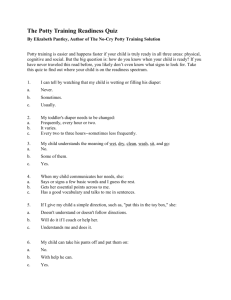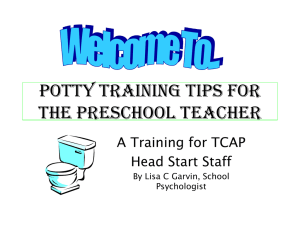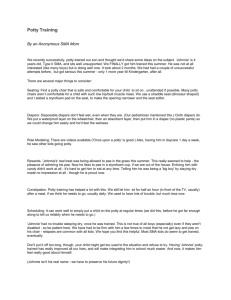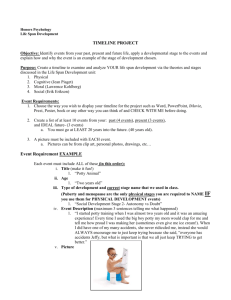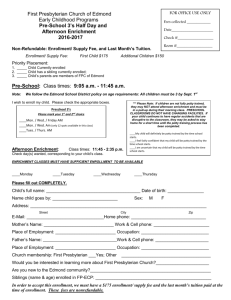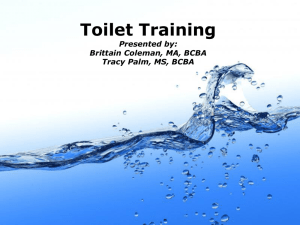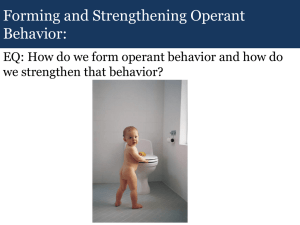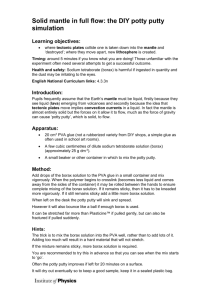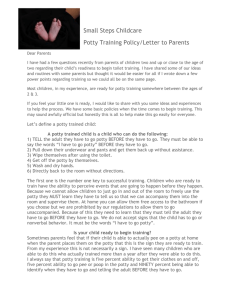Getting Ready For Potty Training
advertisement
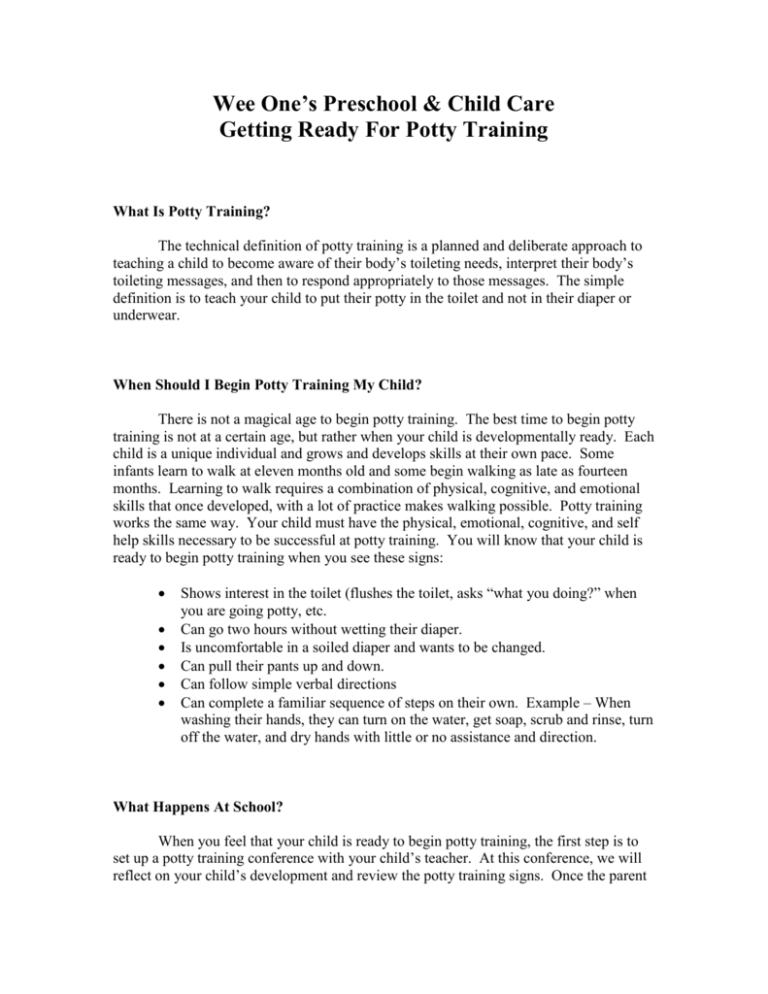
Wee One’s Preschool & Child Care Getting Ready For Potty Training What Is Potty Training? The technical definition of potty training is a planned and deliberate approach to teaching a child to become aware of their body’s toileting needs, interpret their body’s toileting messages, and then to respond appropriately to those messages. The simple definition is to teach your child to put their potty in the toilet and not in their diaper or underwear. When Should I Begin Potty Training My Child? There is not a magical age to begin potty training. The best time to begin potty training is not at a certain age, but rather when your child is developmentally ready. Each child is a unique individual and grows and develops skills at their own pace. Some infants learn to walk at eleven months old and some begin walking as late as fourteen months. Learning to walk requires a combination of physical, cognitive, and emotional skills that once developed, with a lot of practice makes walking possible. Potty training works the same way. Your child must have the physical, emotional, cognitive, and self help skills necessary to be successful at potty training. You will know that your child is ready to begin potty training when you see these signs: Shows interest in the toilet (flushes the toilet, asks “what you doing?” when you are going potty, etc. Can go two hours without wetting their diaper. Is uncomfortable in a soiled diaper and wants to be changed. Can pull their pants up and down. Can follow simple verbal directions Can complete a familiar sequence of steps on their own. Example – When washing their hands, they can turn on the water, get soap, scrub and rinse, turn off the water, and dry hands with little or no assistance and direction. What Happens At School? When you feel that your child is ready to begin potty training, the first step is to set up a potty training conference with your child’s teacher. At this conference, we will reflect on your child’s development and review the potty training signs. Once the parent and their teacher make the decision to begin potty training, a Potty Training Plan will be developed. This plan addresses Transitioning from diapers to pull ups, and then underwear. Equipment used for potty training. Frequency of sending child to the toilet. Words and cues used for potty training. Response when there is a toileting accident. This plan builds good communication between parents and their child’s teacher, and insures consistency between home and school. Consistency between home and school has a direct impact on the child’s potty training success. Communication between parent and teacher is critical. If something is not working, or a change needs to be made to the Potty Training Plan, set up time to communicate those needs. What Should I Do At Home? Potty training for your child is about learning new skills. Just like learning to walk, they fell down a lot in the beginning. Expect toileting accidents in the beginning. As they learn to listen to their body’s cues and messages, toileting accidents will decrease. Don’t let potty training dominate your family time. Remember, when your child was learning to walk did you make them practice walking for hours on end. When they fell, how did you respond? By following the Potty Training Plan at home, you should have little disruption to the family’s normal routine. Potty Training Mistakes The biggest mistake that is made by parents and teachers during potty training is the strong negative response that sometimes comes out due to frustration. After changing the child’s clothes for the third time, it is easy to say something like “babies wet their diapers, big girls don’t potty in their panties”, “I should put you back in diapers”, and other harsh, hurtful words. Remember, your child is learning something new and complex. Be patient and calm when potty training and responding to accidents. Physical responses such as spanking and harsh scolding and threats do not work. Children respond best to positive words of encouragement, praise, hugs, and rewards. It is OK to show sadness when accidents happen “oh (deep sigh) you had an accident, let’s go get cleaned up and try again”. Make a conscious effort to celebrate their successes more than you show your disappointment. Remember to have good communication with your child’s teacher if the Potty Training Plan is not working.
